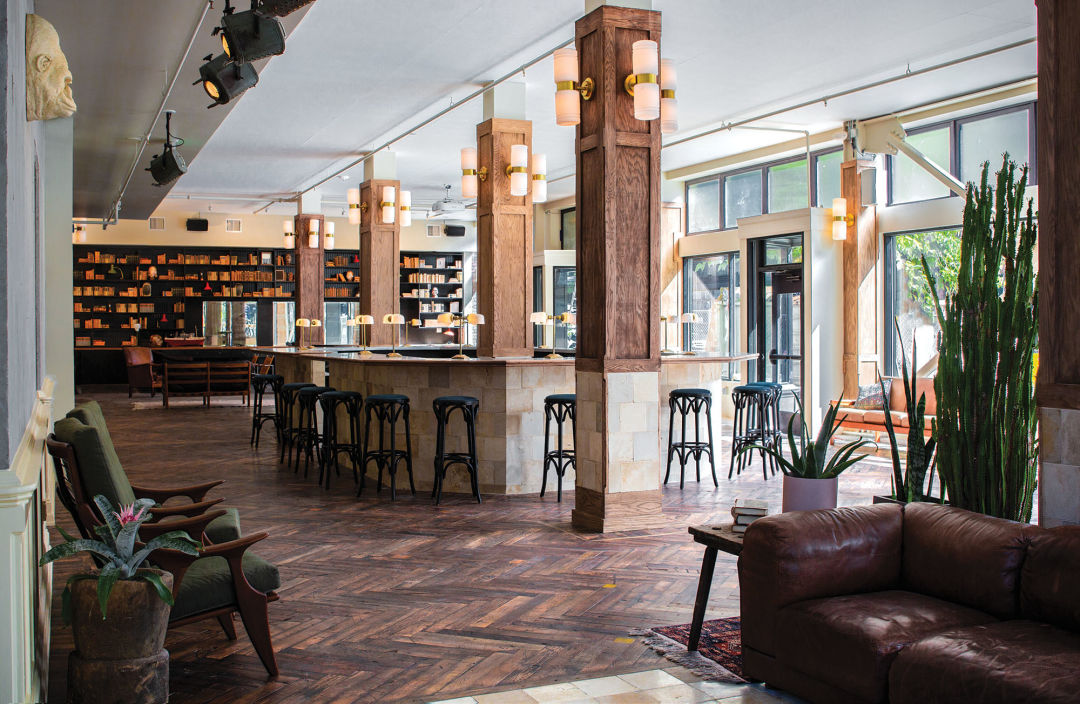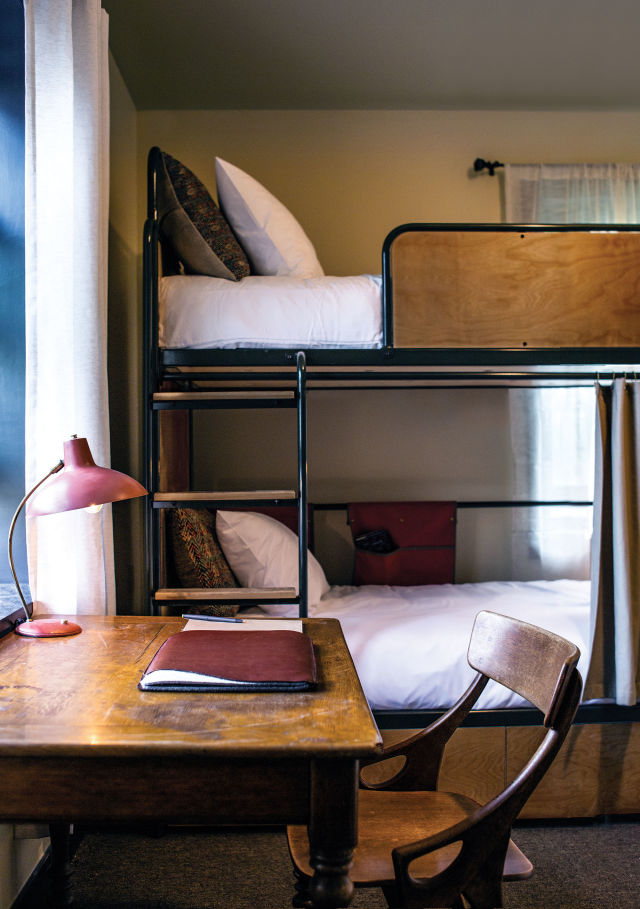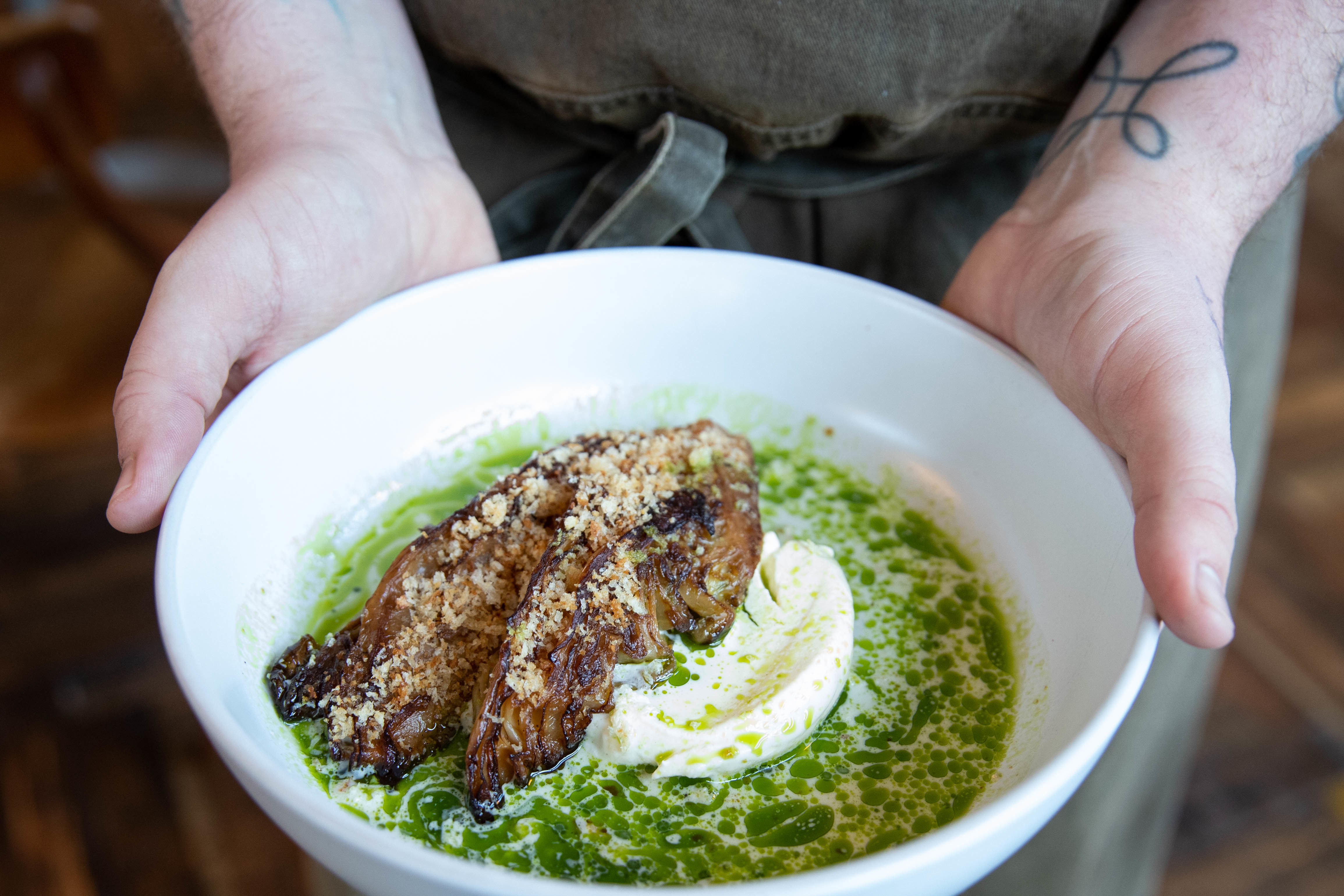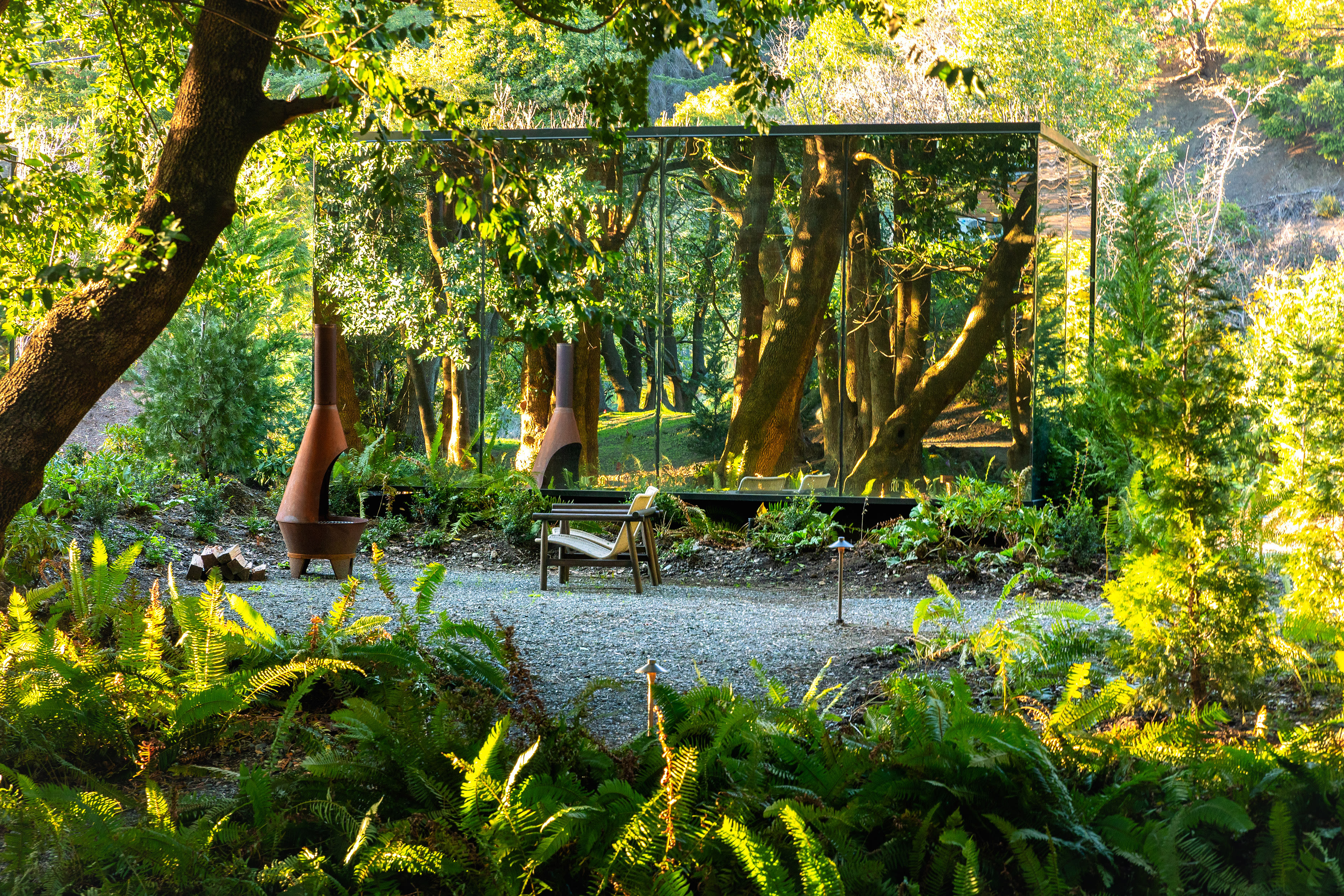Portland Hasn't Seen A Boutique Hotel Quite Like This Before

Image: Courtesy KEX Portland
Vintage Italian fencing masks. Tall doors salvaged from an old Cairo bakery. One hundred and forty hand-painted signs from a Belgian racetrack with the names of long-dead horses. Ancient-looking milking stools from a farm in rural Hungary. Stone—yes, real stone—shelving from the Dutch National Archives.
All of this historical detritus, and much more, is showcased in the newly opened Kex Hotel near the Burnside bridgehead. It’s a far cry from the minimalist, midcentury chic that has dominated Portland’s hotel boom in recent years.
“Stuff is not supposed to last [anymore]. It’s all about bottom-line profits,” says the hotel’s interior designer, Hálfdan Pedersen of Baulhus Design. “That goes for your phone and that goes with your clothing—you throw it away. I mean, how many of us still stitch ourselves? This stuff has just passed the test of time—and it’s out-aged our grandparents.”

Image: Courtesy KEX Portland
Open since early November, the hotel is only the second outpost of the budget-friendly Icelandic answer to the Ace Hotel. (The first, which Pedersen also designed, is in Reykjavík.) But unlike many of the new high-rise hotels reshaping Portland’s skyline—think the überhip Jupiter Next and the 33-story building rising downtown slated to house a Ritz-Carlton—Kex already feels old. It’s housed in the humble, brick-covered Vivian apartment building, built in 1912, and there’s history everywhere you look. (In a nod to the past, Kex’s flagship restaurant is named Vivian, though the Scandi-influenced menu is decidedly present-day, with a focus on foods both foraged and fermented.)
Pedersen, an Iceland native, says Kex gave him free rein to scour the world for things to fill the three stories. He delivered, with two shipping containers worth of stuff. The milking stools became bedside tables. An abandoned factory’s old bamboo conveyor belt—yes, they used to be made out of bamboo—is now wrapped around the lobby desk. The stone shelves are, OK, shelves.
“I don’t think there’s a word for it,” he says when asked about his aesthetic. “It’s just a certain color palette, and things with a nice patina, and just anything that grabs my attention. There’s no style or era. I don’t want it to feel like a museum. It’s supposed to feel lived in and warm and bright.”




